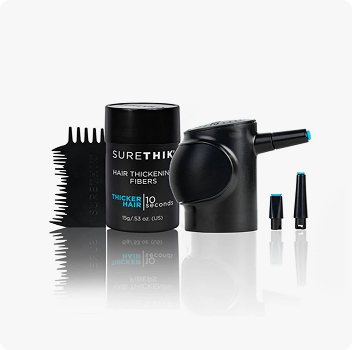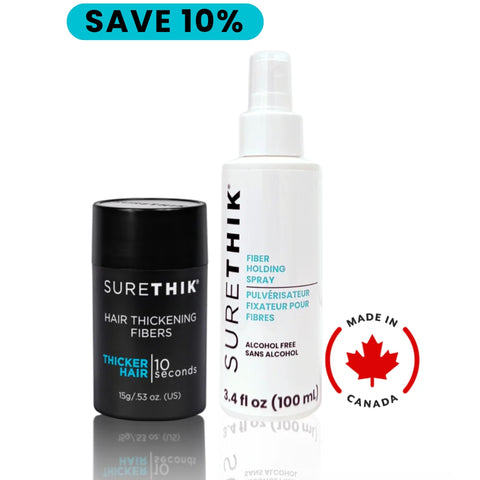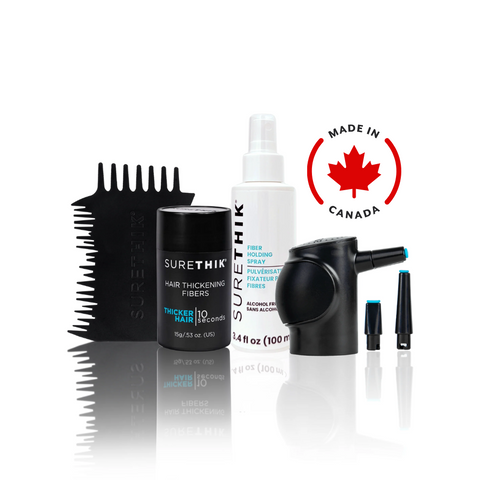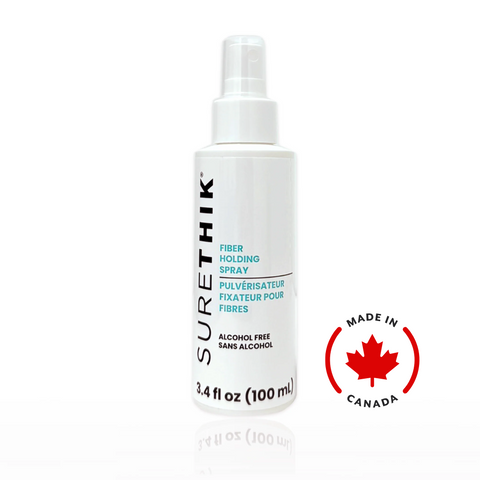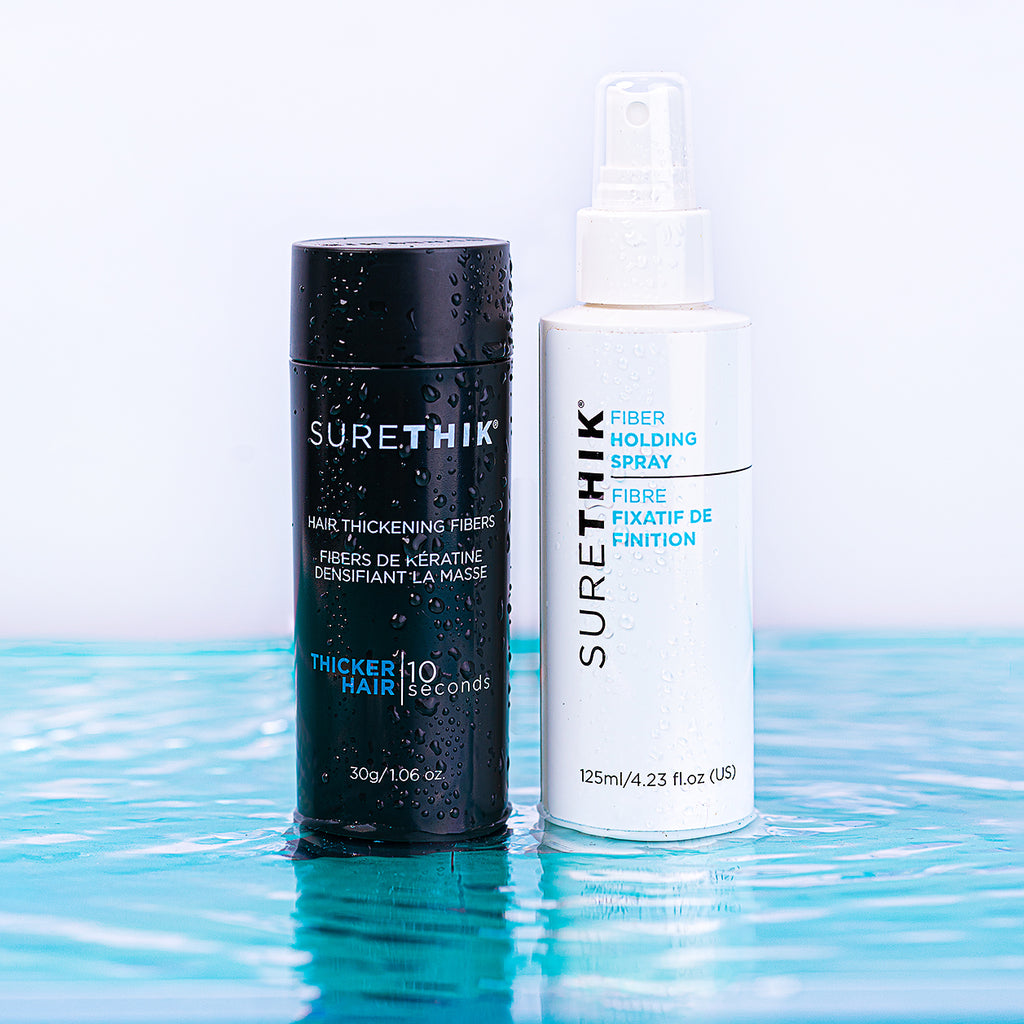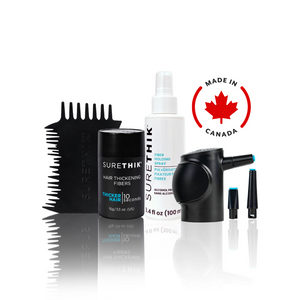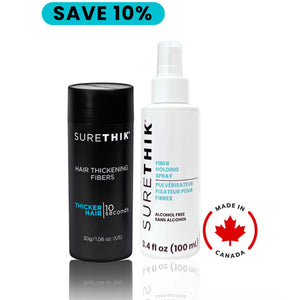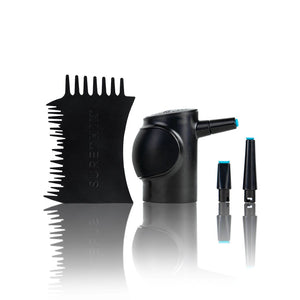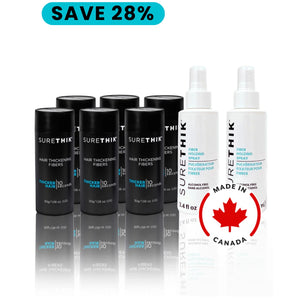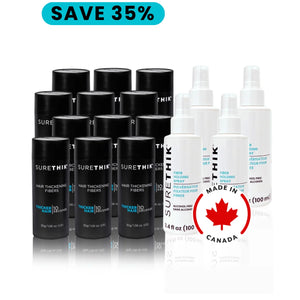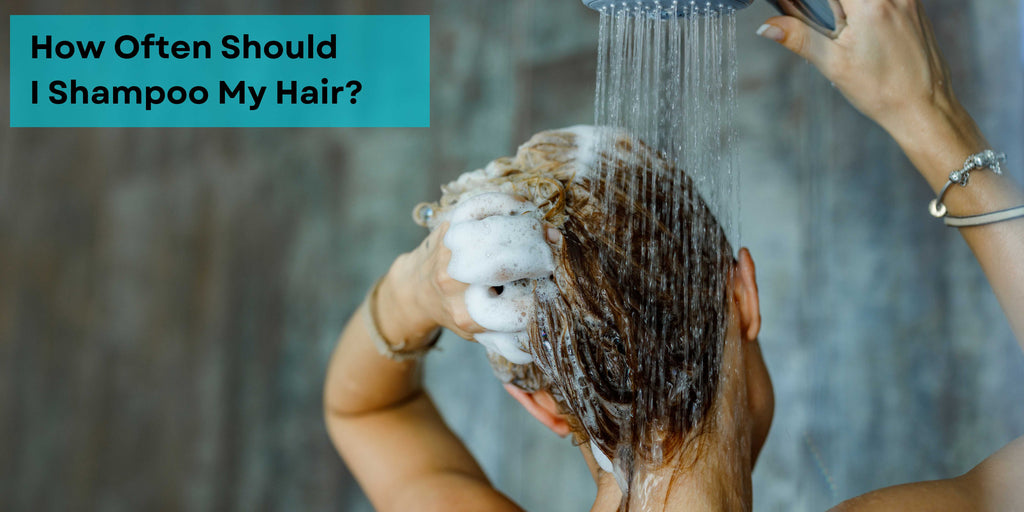
HOW OFTEN SHOULD I SHAMPOO MY HAIR?
Shampooing your hair may seem like a simple task, but there's more to it than just lathering up and rinsing. The frequency, method, and choice of shampoo all play a significant role in maintaining healthy and beautiful locks. In this blog post, we'll explore the various aspects of hair washing, including why shampooing the right way is essential, the functions of shampoo, ingredients to look for, the ideal frequency for washing, the type of shampoo to use, and how to wash your hair correctly.
THE IMPORTANCE OF SHAMPOOING THE RIGHT WAY
Shampooing your hair correctly is vital for several reasons:
- Cleansing: Shampoo removes dirt, oil, and product buildup from your hair and scalp. Proper cleansing helps prevent clogged hair follicles, which can lead to issues like dandruff and hair loss.
- Balancing: The right shampoo can help balance the scalp's natural oils. Overwashing or using harsh shampoos can strip your scalp of these oils, leading to dryness and irritation. Conversely, not washing enough can lead to excess oil buildup.
- Styling: Clean hair is easier to style and manage. When your hair is free of excess oil and residue, it's more responsive to styling products and heat tools.
- Health: A clean scalp is essential for overall hair health. It promotes a healthy environment for hair growth and can help reduce problems like itching and inflammation.
Now that we understand the importance of shampooing correctly, let's delve into what shampoo does and what ingredients to look for.

WHAT DOES SHAMPOO DO?
Shampoo serves multiple functions in hair care:
- Cleansing: As mentioned earlier, shampoo's primary role is to remove dirt, oil, and product buildup from your hair and scalp.
- Hydration: Some shampoos contain moisturizing ingredients to help hydrate and nourish your hair.
- Strengthening: Certain shampoos are formulated with ingredients like proteins and vitamins to strengthen hair strands.
- Dandruff Control: Specialized shampoos target dandruff and scalp conditions, often containing anti-fungal agents or exfoliants.
- Color Protection: Shampoos designed for color-treated hair aim to maintain and protect the vibrancy of your hair color.
- Volume and Texture: Volumizing shampoos can add body to fine hair while texturizing shampoos help create a beachy, textured look.

INGREDIENTS TO LOOK FOR IN SHAMPOO.
When selecting a shampoo, it's crucial to consider your hair type and specific needs. Here are some key ingredients to look for:
- Sulfate-Free: Sulfates are harsh cleansing agents that can strip your hair of natural oils. Look for sulfate-free shampoos to prevent excessive dryness.
- Natural Oils: Shampoos with natural oils like argan oil, coconut oil, or jojoba oil can help hydrate and nourish your hair.
- Proteins: Protein-infused shampoos can strengthen hair and reduce breakage. Common proteins include keratin and silk.
- Vitamins: Shampoos with vitamins like Biotin (Vitamin B7) and Panthenol (Pro-Vitamin B5) can promote hair health and growth.
- Caffeine: Known for its stimulating properties, when applied to the scalp, it can increase blood circulation, which, in turn, may promote hair growth. Improved blood flow to the hair follicles can provide them with the necessary nutrients and oxygen for healthy growth.
- Hyaluronic Acid: Hyaluronic acid helps retain moisture, making it suitable for dry or damaged hair.
- Ketoconazole: An anti-fungal ingredient often found in dandruff shampoos; ketoconazole can help treat conditions like seborrheic dermatitis.
- Aloe vera: Renowned for its moisturizing properties, it contains a high-water content, which helps hydrate and condition both the hair and scalp. This can be particularly beneficial for individuals with dry or damaged hair.

CHOOSING THE RIGHT SHAMPOO
Selecting the right shampoo involves considering your hair type, specific needs, and any concerns you may have. Here are some tips for choosing the best shampoo for your hair:
- Know Your Hair Type: Determine whether your hair is oily, dry, normal, curly, straight, or fine. This will guide your choice of shampoo.
- Identify Your Concerns: Do you have dandruff, frizz, or color-treated hair? Look for shampoos that address your specific concerns.
- Read Labels: Always read the ingredient list to ensure the shampoo aligns with your goals. Avoid products with harsh chemicals if you have sensitive skin or scalp.
- Consider Sulfate-Free Options: Sulfate-free shampoos are milder and can be a good choice for most hair types.
- Experiment: Don't be afraid to try different shampoos until you find the one that works best for you.

OUR RECOMMENDATION: SURETHIK THICKENING SHAMPOO
SURETHIK’s sulfate, paraben, and silicone-free shampoo is an excellent choice for a variety of reasons, as it offers numerous benefits for both your hair and overall hair care routine. Here's why opting for such a shampoo can be the right choice:
- Gentle Cleansing: Sulfate-free shampoos, like SURETHIK, offer a gentle and non-stripping cleansing experience. Traditional shampoos containing sulfates can be harsh on the hair and scalp, stripping away natural oils and potentially causing dryness and irritation. A sulfate-free formula ensures a milder cleanse, making it suitable for all hair types, including those with sensitive scalps.
- Preserves Natural Oils: SURETHIK, does not contain synthetic preservatives like parabens. These preservatives can sometimes disrupt the natural oil balance of the scalp. By avoiding parabens, SURETHIK helps maintain the natural oils on your scalp, which are essential for healthy hair and scalp function.
- No Silicone Buildup: Silicone-free shampoos prevent the buildup of silicone residues on the hair and scalp. While silicone can create the illusion of smoother and shinier hair temporarily, it can accumulate over time, leading to limp and weighed-down hair. SURETHIK’s silicone-free formula ensures that your hair remains light and bouncy.
- Suitable for All Hair Types: SURETHIK sulfate, paraben, and silicone-free shampoo are formulated to be suitable for all hair types. Whether you have dry, oily, curly, straight, fine, or coarse hair, this shampoo can help maintain the natural balance and health of your hair and scalp.
- Color and Chemical Treatment Friendly: If you have color-treated hair or have undergone chemical treatments like perms or straightening sulfate-free and paraben-free shampoos are often recommended. These shampoos are gentler on treated hair and help preserve the longevity of your color or treatment.
- Reduced Allergic Reactions: Some individuals may be sensitive or allergic to sulfates, parabens, or silicones. By using a shampoo free of these ingredients, you reduce the risk of adverse reactions, making it a safer choice for those with sensitive skin or allergies.
- Environmentally Friendly: Sulfate-free, paraben-free, and silicone-free shampoos are often considered more environmentally friendly because they do not introduce harmful chemicals into the water supply, which can be detrimental to aquatic ecosystems.
- Healthier Hair Over Time: By choosing a shampoo that is free of potentially harmful ingredients, you are promoting the long-term health and vitality of your hair. Your hair will be less likely to suffer from dryness, damage, or excessive buildup, resulting in a healthier and more manageable mane.

SURETHIK THICKENING CONDITIONER is the ideal complement to SURETHIK shampoo for a multitude of reasons. When used together, these hair care products create a powerful and synergistic duo that promotes the health and beauty of your hair. Here's why SURETHIK conditioner perfectly complements the shampoo:
- Balanced Hydration: While SURETHIK sulfate, paraben, and silicone-free shampoo gently cleanses the hair and scalp, it's crucial to follow up with a conditioner to restore moisture and maintain a healthy moisture balance. SURETHIK conditioner provides the necessary hydration, preventing your hair from becoming overly dry and brittle.
- Enhanced Manageability: SURETHIK conditioner helps detangle and soften the hair, making it more manageable and easier to style. This is especially important after using a shampoo, as shampooing can sometimes leave the hair feeling slightly rough or tangled.
- Improved Texture: When used alongside SURETHIK shampoo, the conditioner can improve the texture of your hair. It adds a touch of softness and smoothness, leaving your hair feeling silkier and more luxurious.
- Long-Term Hair Health: The combination of SURETHIK shampoo and conditioner promotes long-term hair health. While the shampoo cleanses and purifies, the conditioner ensures that your hair remains nourished and fortified. This helps prevent issues such as breakage, split ends, and excessive dryness.
SURETHIK conditioner complements the SURETHIK shampoo perfectly by providing essential hydration, enhancing manageability, and improving the texture of your hair. Together, they create a comprehensive hair care routine that supports long-term hair health and ensures optimal results. Whether you have specific hair care needs or simply want to maintain the natural beauty of your hair, using SURETHIK conditioner alongside the shampoo is a smart and effective choice.

HOW OFTEN SHOULD YOU WASH YOUR HAIR?
The frequency of hair washing varies from person to person and depends on several factors:
- Hair Type: People with oily hair may need to shampoo more frequently than those with dry hair. Fine hair may also need more frequent washing than coarse hair.
- Lifestyle: If you lead an active lifestyle and sweat frequently, you may need to wash your hair more often.
- Environmental Factors: Pollution and environmental factors can contribute to hair dirtiness. People in heavily polluted areas may need to wash more often.
- Hair Style: Some hairstyles, like tight braids or extensions, may require less frequent washing to avoid damage.
As a general guideline:
- Oily Hair: 2-3 times a week or as needed.
- Normal Hair: 2-4 times a week or as needed.
- Dry Hair: 1-2 times a week or as needed.
- Curly Hair: 1-2 times a week or as needed (curly hair tends to be drier).
- Fine Hair: 3-4 times a week or as needed.
Ultimately, listen to your hair. If it feels greasy or looks limp, it's probably time for a wash. Conversely, if your hair feels dry and brittle, you may be washing it too frequently.

HOW TO WASH YOUR HAIR CORRECTLY
Now that you've selected the right shampoo for your hair, it's essential to use it correctly to maximize its benefits. Here's a step-by-step guide on how to wash your hair properly:
Step 1: Wet Your Hair
Before applying shampoo, thoroughly wet your hair with warm water. Hot water can strip your hair of natural oils, so opt for lukewarm water instead.
Step 2: Apply Shampoo
Pour a small amount of shampoo into your palm (about the size of a quarter for short hair, more for longer hair) and lather it between your hands.
Apply the shampoo evenly to your scalp and hair. Focus on massaging your scalp with gentle circular motions. This helps remove dirt and promotes blood circulation.
Step 3: Rinse
Rinse your hair thoroughly with lukewarm water until all the shampoo is washed out. Make sure there are no residual suds left in your hair.
Step 4: Condition (Optional)
If you use conditioner, apply it to the mid-lengths and ends of your hair, avoiding the scalp. Leave it on for the recommended time, usually a few minutes, and then rinse it out.
Step 5: Rinse with Cool Water
For an extra shine boost, finish with a final rinse using cool water. This can help seal the hair cuticles and make your hair look smoother and shinier.
Step 6: Towel Dry Gently
Avoid vigorously rubbing your hair with a towel, as wet hair is more fragile and prone to damage. Instead, gently blot your hair to remove excess water.
Step 7: Style as Desired
Once your hair is damp, apply any styling products you use and style your hair as desired. If you use heat styling tools, make sure to use a heat protectant spray before using them.
Step 8: Let Your Hair Air Dry
Whenever possible, allow your hair to air dry. Excessive heat from hair dryers can damage your hair over time.
Remember, over washing your hair can lead to dryness, while infrequent washing can cause oil buildup. Finding the right balance for your hair type and lifestyle is essential.
SPECIAL CONSIDERATIONS
- Color-Treated Hair
If you have color-treated hair, use a shampoo specifically designed for colored hair. These shampoos are gentler on the hair and help maintain the vibrancy of your color.
- Dandruff and Scalp Issues
If you have dandruff or scalp conditions, consider using a medicated shampoo with ingredients like ketoconazole, coal tar, or salicylic acid as directed by a healthcare professional.
- Oily Scalp
For an oily scalp, look for a clarifying shampoo that can help control excess oil production without stripping your hair.
- Dry or Damaged Hair
If you have dry or damaged hair, opt for a hydrating or moisturizing shampoo that can help restore moisture and repair your hair.
- Fine or Thin Hair
Fine or thin hair may benefit from volumizing shampoos that add body and texture.
CONCLUSION
Properly shampooing your hair is essential for maintaining its health and appearance. By selecting the right shampoo for your hair type and concerns, washing it at an appropriate frequency, and following the correct washing method, you can achieve and maintain beautiful, healthy locks. Remember that individual hair care needs vary, so it may take some experimentation to find the perfect shampoo and routine for you. Ultimately, the key is to listen to your hair and adapt your hair care regimen as needed to keep it looking its best.

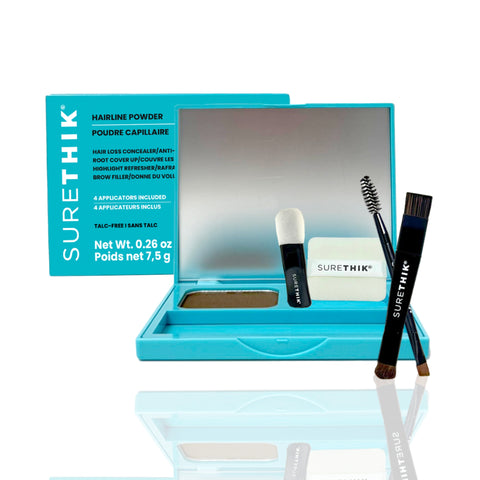
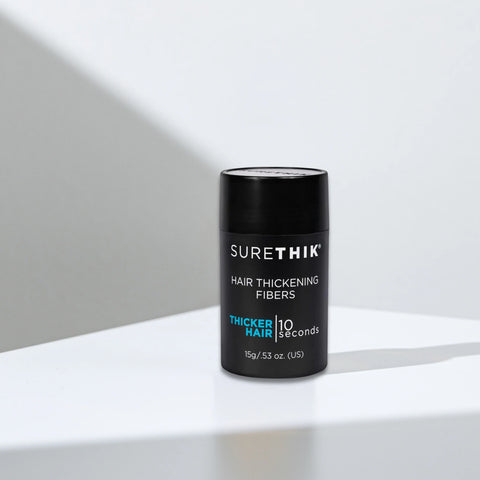
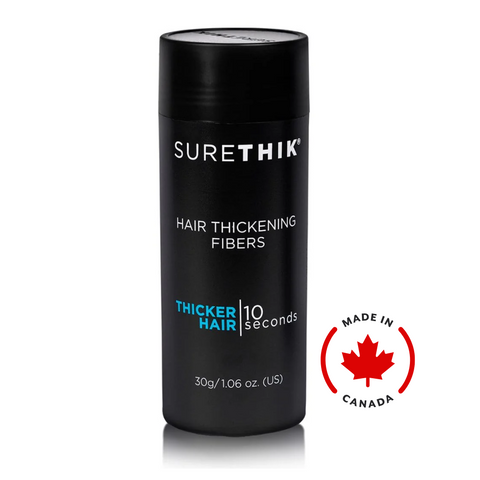


 United States
United States